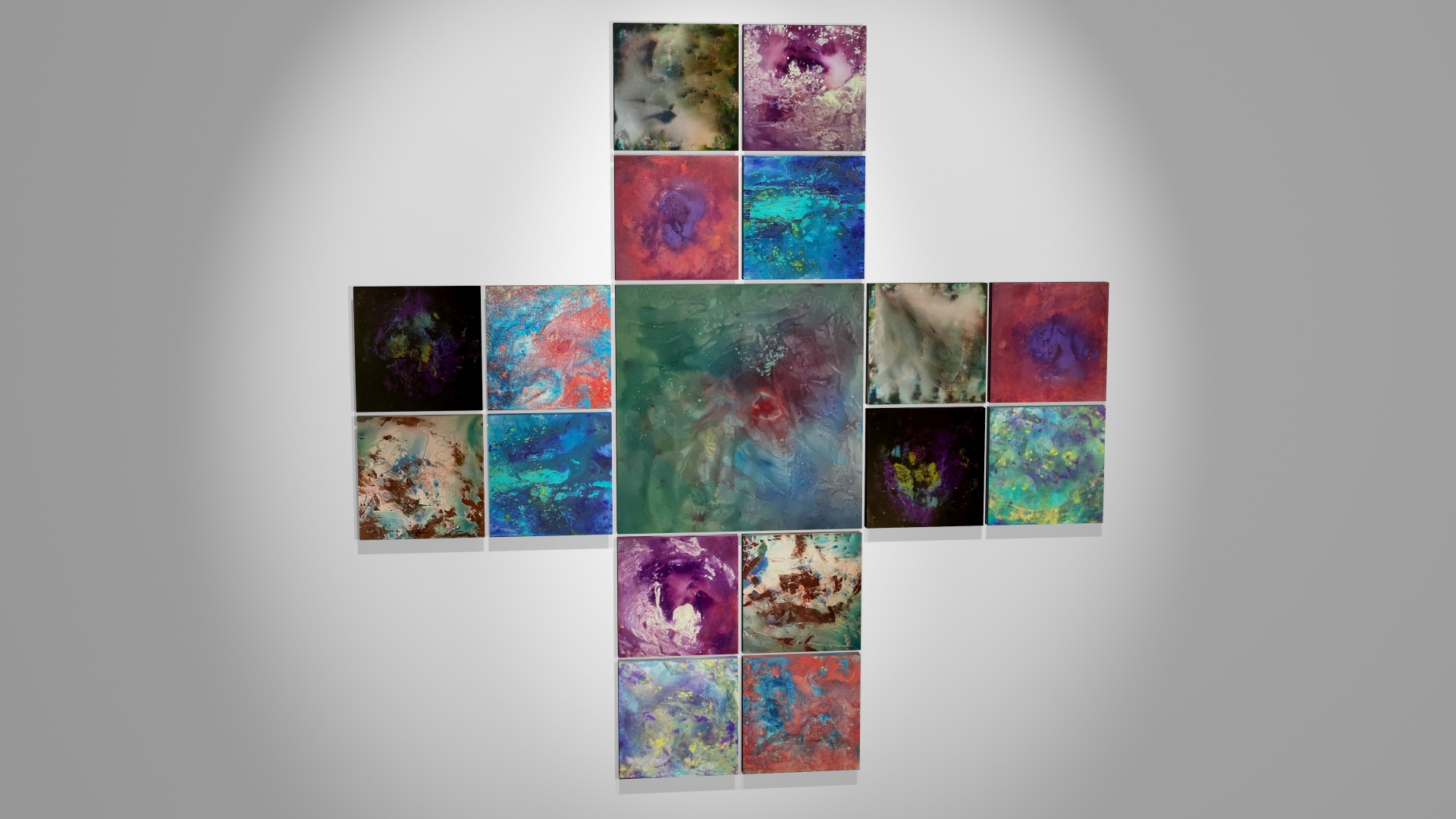
Anacrónico is a constellation of contradictions, a visual altar where the illusion of duality is unveiled. Composed of seventeen panels arranged in the form of a cross, the piece becomes a dimensional map of fragmentation and reunion. Life and death, love and hatred, light and shadow, subject and object—each polarity disarms itself in the face of a deeper truth: there is no separation.
At the center of this multiplicity pulses Tsewa—the heart, the original vibration, the point of convergence where all opposites dissolve and the One emerges. Tsewa is not just a panel; it is a portal. It holds the frequency of the eternal, radiating outwards and receiving simultaneously, like a heart that listens as much as it beats.
Each surrounding panel embodies an emotional field, a psychic imprint. Some shimmer with cosmic light, others descend into depth and rupture. Together, they enact the dance of becoming: the rhythm of opposing forces that, rather than negate each other, reveal their interdependence. This is not a reconciliation, but a surrender to the ungraspable unity that pulses beneath all things.
The cross-shaped structure evokes both the spiritual axis and the anatomy of paradox—vertical and horizontal, interior and exterior, sky and earth. Yet all directions ultimately point toward Tswea, the luminous center where all begins, and all returns.
Anacrónico does not offer resolution. Instead, it invites presence. It asks the viewer to inhabit the liminal, to feel the sacred discomfort of the unresolved, and to witness the alchemy of wholeness in fragmentation. This work is not linear, nor is it still—it is a living field of frequencies, a visual prayer that remembers what we often forget: that all is one, and all is now.
